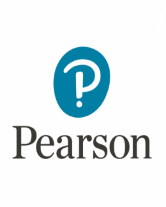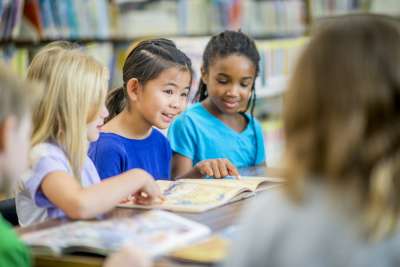Objectives
This lesson is designed to introduce predicting as a reading strategy to primary students using the book, The Little Mouse, the Red Ripe Strawberry, and the Big Hungry Bear by Don and Audrey Wood. In this lesson, students make and refine predictions. This lesson is the first of a set of predicting lessons designed for primary grades.
Predicting is an early primary skill that students should be introduced to early in the year. Students should have some experience making guesses and making predictions about events that are not story-related. As students develop their skills of making predictions, they will learn to modify or change their predictions, based on information from the text.
Materials
The Little Mouse, the Red Ripe Strawberry, and the Big Hungry Bear, by Don and Audrey Wood
Sticky notes
Graphic Organizer
At least one fresh strawberry per student placed in a paper bag
One strawberry on a plate
Procedure
Hook/Engagement
Engage students with this activity before making predictions about the book you will read. Activate prior knowledge and engage students by placing the closed paper bag with the strawberries in a central location. On the chalkboard write the word "prediction". Say, "I wonder what might be in this bag." Guide students as they make a prediction about what might be in the paper bag and upon what information they are basing that prediction. Once you have gathered student responses, open the bag, peer inside, and tell students that the item inside is red. Revise their predictions as needed emphasizing that you have more information to use now. Tear open the paper bag and make final revisions to the predictions emphasizing that the prediction changed based on the information you gathered. State that this process is the same when you read a book. Your predictions change based on the information you gather as you read.
Ask students what the strawberries might have to do with the story you are going to read. Accept any reasonable answers and if needed provide the information that a strawberry is a sweet tasting fruit that people as well as animals eat.
Vocabulary
Predicting: Using the pictures, the title, and what you already know to make guesses about a story before, during, and after reading.
Measurable Objectives
Tell students they will be using a new reading strategy that calls for them to use prior knowledge to make predictions about the text and then read to prove or refine those predictions.
Focused Instruction
Mark the book with a sticky note at the following stopping points:
First stopping point: Cover
Second stopping point: Page reading "But, little Mouse, haven't you heard about the big hungry bear?"
Third stopping point: Page reading, "BOOM! BOOM! BOOM!" etc
Fourth stopping point: Page reading, "Quick! There's only one way in the whole wide world "etc
Fifth stopping point: End of the story
Model how a good reader makes predictions. Hold up the book The Little Mouse, the Red Ripe Strawberry, and the Big Hungry Bear by Don and Audrey Wood and show the cover to the class. Use the Think-aloud strategy to model the process of predicting before reading.
"I found this interesting book at the library and by looking at the cover and reading the title, The Little Mouse, the Red Ripe Strawberry, and the Big Hungry Bear, I am guessing or predicting the story will be about a mouse, a bear, and a strawberry. Maybe the mouse takes a strawberry from the hungry bear. When we use what we know to make a guess before we read it is called "predicting".
Read the story aloud to the second stopping point. Think-aloud while reading the book to students, modeling the process of predicting while reading.
"Hmmm... my prediction that the story would be about a mouse, a bear, and a strawberry was right, but I did not think that the mouse would be picking the strawberry near his house. I'll make a new prediction that the bear comes to the mouse's house to take the strawberry from based on what we read."
Read the story aloud to the third stopping point. Think-aloud, modeling how to refine predictions and make new predictions while reading.
"Hmmm... my prediction that the story would be about a mouse, a bear, and a strawberry was right, but I did not think that the mouse would be so scared. I'll make a new prediction that the mouse is too afraid to eat the strawberry and runs away based on what we read."
Read the story aloud to the fourth stopping point. Think-aloud while reading a book to students, modeling the process of predicting while reading.
"Hmmm... my prediction that the story would be about a mouse, a bear, and a strawberry was right was right, but I did not think that the person telling the story would want a piece of the strawberry. Do you think I need to change my prediction?"
Elicit responses from the students about the prediction/s based on what the text is saying and what the pictures are telling them.
Read aloud to the end of the story. Think-aloud after reading, modeling the process of reflecting on predictions after reading. Cite evidence from the illustrations and text to support your thinking.
"My first prediction was that the story would be about a mouse, a bear, and a strawberry and that the mouse would take a strawberry from the hungry bear. After reading part of the story I predicted that the mouse was too afraid to eat the strawberry and would run away. Now that I am finished reading I think my predictions were close some of the time because there was a mouse and a strawberry. My predictions were not close because the bear did not come and take the strawberry but the person telling the story got the mouse to give him half of it. Who do you think was telling the story? Maybe it was a bear? Maybe it was a person trying to trick the mouse out of half of the strawberry? What do you think?"
Guided Practice
Select another book, possibly about mice, to read aloud. Assign three to five students to a group to share their predictions. Hand out the graphic organizer for students to keep track of their predictions. You may want to have other adults volunteer to assist students in writing their predictions.
Before reading the story aloud, share and discuss predictions as a class and then complete the 'before reading' section of the Prediction Organizer.
Read the story, stopping at various points to allow groups to revise, verify and make new predictions. Ask a student in each group to share a prediction using the "think-aloud" strategy. Students can take turns writing down the prediction or dictating it to an adult.
When you finish reading the story aloud allow time for the groups to make final revisions to predictions and complete the 'after reading' section of the Prediction Organizer. Ask a member of each group to "use the "think-aloud" strategy to share their groups' predictions.
Another suggestion is to use pictures to make a prediction about what may be happening. Cover part of the picture and have students make a prediction, and then uncover the picture and have students revise their predictions. Discuss how having more information can help to make a better prediction.
Independent Practice
Begin self-selected reading time by having students make a prediction about a book they have chosen. Have students write or draw a picture of the prediction on the Prediction Organizer. Circulate around the room during self-selected reading time asking students about their predictions and whether they need to revise the prediction based upon what they are reading or understanding from the pictures.
Assessment
Once students have had experience with using prediction as a strategy to improve reading comprehension, you will want to determine their success at using the strategy. Distribute the Prediction Organizer at the beginning of read aloud time, and select a book that students may not be familiar with. Before you read, ask students to write or draw a picture prediction on the Prediction Organizer. During reading, pause to allow students to verify or revise predictions without offering guidance. After reading, ask students to respond to the last section of the Prediction Organizer "Did I predict what happened in the story? Why or why not?"
Reflection and Planning
Collect and review student responses to determine students who are in need of additional instruction. Reflect on how you could enhance the lesson, and determine whether students would benefit from another lesson to reinforce the strategy of predicting. Be sure it is not a student's inability to write that you are assessing, but the student's ability to make predictions about the text.
For more practice with prediciting, try the lesson plans Predicting: Strega Nona and Predicting, DR-TA: The Garden of Abdul Gasazi.

Use the prediction strategy while reading aloud the book The Little Mouse, the Red Ripe Strawberry, and the Big Hungry Bear to your class.




